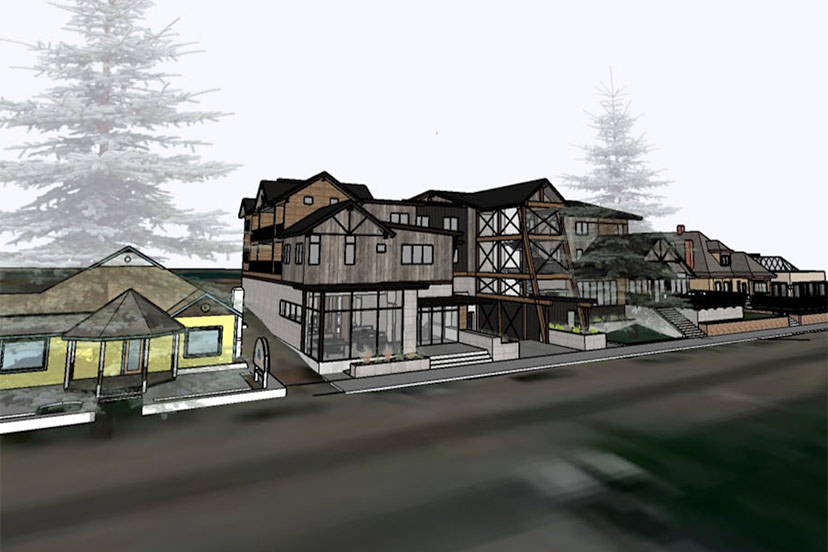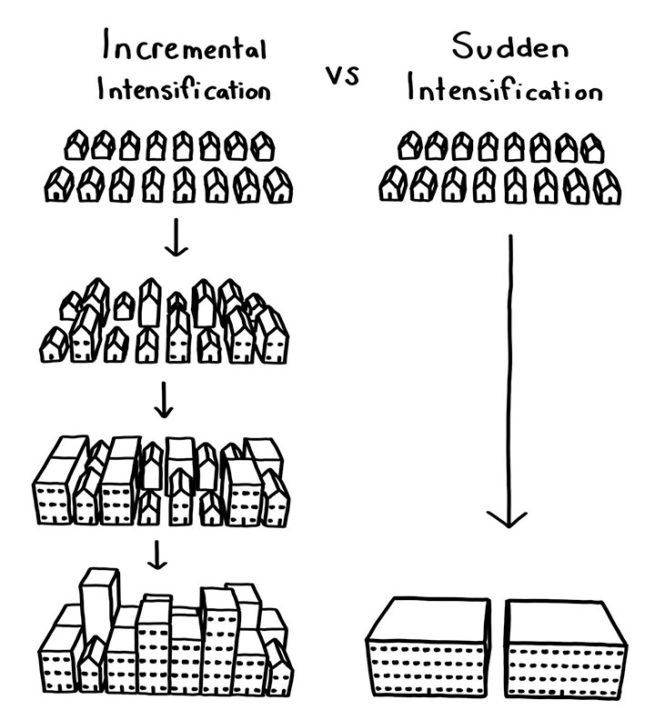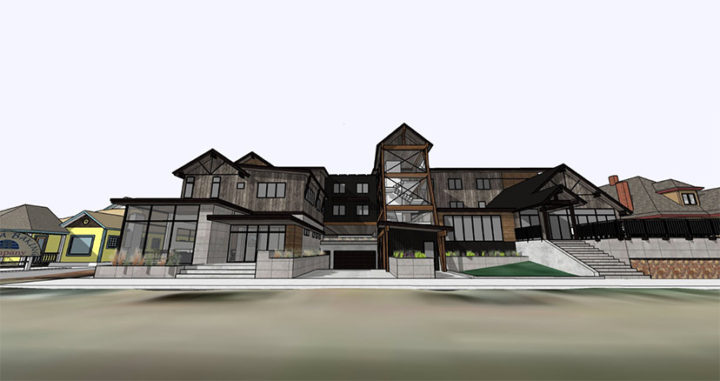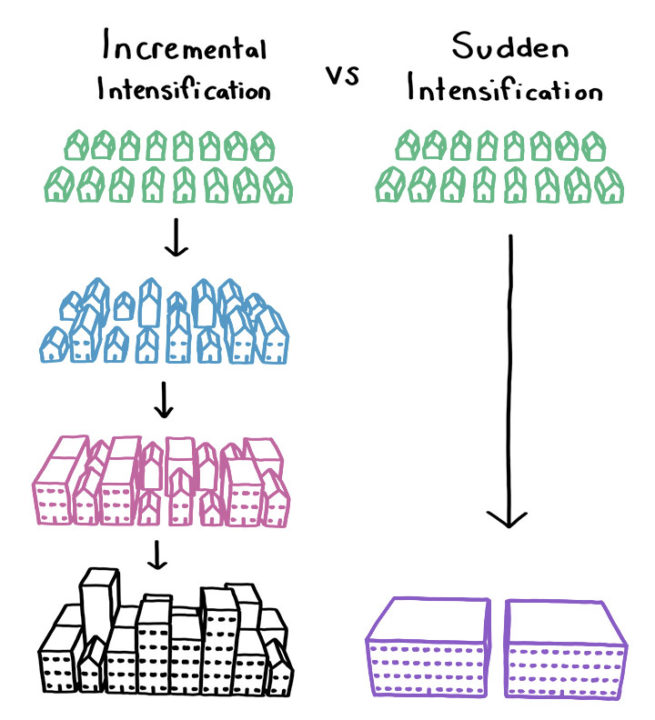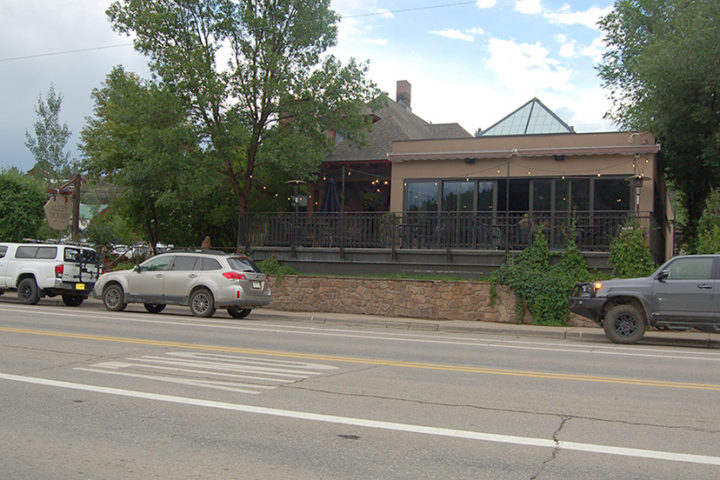Strong Towns talks a lot about incremental change as opposed to sudden change. But what exactly does it mean?
— from ‘What Does Incrementalism Actually Mean?’ by Andrew Price, on the Strong Towns website, 2018.
I had a delightful conversation with a local builder yesterday morning, during which we touched on a number of topics. Government regulation. Private property rights. Vacation rentals. Water.
People often have strong feelings about ‘property rights’, and often those feelings are related to government rules limiting what kinds of structures, and what types of building uses, are allowed on privately-held property.
As with all regulations and limitations, the coin has two sides.
When architects Brad Ash and Lauren Davis were told by the Pagosa Springs Planning Commission that their proposed 43,800-square-foot mixed-use building, contemplated for 232 Pagosa Street, did not meet the intent of the Town’s Land Use and Development Code (LUDC), someone (hypothetically) could have protested that the Town government has no right to tell a private property owner what they can and cannot build on their own private property.
No one actually made that argument at the June 12 hearing, but a different argument was implied by architect Brad Ash: that developers might decide to shun Pagosa Springs, if they are unduly restricted by the LUDC and by Planning Commission interpretations of the LUDC.
And as a result, we (as a community) might not ‘grow’.
The other side of the coin? The property rights held by the existing neighbors. Those rights are specifically protected by the LUDC. In the case of the East Village, the Town government — in its wisdom, and with the intention of protecting the neighboring property owners from oppressive development schemes — placed the East Village within a special “overlay” zoning district, to protect the character of that neighborhood.
In the opinion of three of the five voting Planning Commission members, the 232 Pagosa Street Development violated the East Village Overlay District rules.
In Part Three, we briefly discussed ‘incrementalism’… an idea being promoted nationally by the organization ‘Strong Towns’ (and by other urban planners as well.) One of their website articles, by contributor Andrew Price, is titled, “What Does Incrementalism Actually Mean?”
From that article:
Strong Towns talks a lot about incremental change as opposed to sudden change. But what exactly does it mean? Let’s explore a few different forms that incrementalism can take, accompanied by hand drawn diagrams.
Land-use patterns change over time. In the diagram below, we have a block of detached single family homes, and there is growing demand to accommodate more people. On the left, we see incremental intensification: each lot is allowed to redevelop as its owner sees fit. Some of the single family homes turn into duplexes. Some time later, the least intensified lots (the single family homes) might turn into small apartment buildings. The remaining single family homes and duplexes turn into mid-rise apartment buildings.
On the right, we see sudden intensification, of a type that often occurs when the lot-by-lot conversions described above are either illegal according to the zoning code, or infeasible for one reason or another.
Here in Pagosa Springs, we don’t often see the type of ‘sudden intensification’ shown on the right side of Mr. Price’s drawing… where we end up with huge concrete blocks of offices or apartments. Our economy doesn’t support that kind of development. In fact, I can’t think of any instance where a developer has proposed that type of building, other than the Walmart store in 2015.
What we get, occasionally, is the type of project proposed this week by Dirty Rose LLC and architects Brad Ash and Lauren Davis.
When considering this proposal, three of the five Planning Commission members felt this building did not fit the intent of the ‘East Village Overlay District’, a special zoning district that specifically calls out ‘less intense development’.
I had the impression the Town planning staff essentially agreed with the Planning Commission decision… to send the architects back to the drawing board.
I’ve taken the liberty of colorizing Mr. Price’s ‘incrementalism’ illustration, to suggest that the ‘East Village’ — back in the 1950s — looked a lot like the little houses at the top of Mr. Price’s drawing. I’ve colored them green. (Like unripe fruit? Or little green apples?)
As the East Village has slowly converted into a commercial district, the intensification of the neighborhood has been ‘incremental’. Something like the ‘blue’ neighborhood.
The proposal for 232 Pagosa Street looks nothing like the purple boxes shown on the bottom right of the drawing. I would suggest that it looks more like the ‘third stage’ of the redevelopment pattern on the left side, which I’ve colored pink. Three stories tall. Boxy shapes on the sides and rear. Looming unpleasantly over the neighboring homes and businesses.
The Pagosa Street Development proposal seems to have skipped right over the ‘second stage’: the two-story buildings that change the character of the neighborhood, but only incrementally and gradually.
During his public comments on Tuesday, architect Brad Ash implied that the economic environment in 2022 requires that developers skip over ‘stage two’ and build intensively, with less regard for existing neighborhood character.
Curiously enough, the Alley House Grille — just east of the vacant lots in question — recently doubled its square footage by building an addition that fits nicely into the neighborhood, in terms of ‘mass and scale’. (Though perhaps not in terms of architectural style.) This ‘incremental’ change to the Alley House was designed by Brad Ash.
So we know, that Mr. Ash knows how to do this.
The ‘property rights coin’ has two sides, as suggested. It’s tempting for planning departments and planning commissions to favor the ‘unfettered growth and development’ side of the coin, because it’s the developers who normally show up at Town Hall, eagerly selling their concepts to planning staff… and then to the Planning Commission…
…and then, at Town Council, getting the final approval for their big ideas.
My hat is off to commissioners who can stand up for the existing neighborhoods, and for an ‘incrementalist approach’.
Growth shouldn’t have to hurt.

